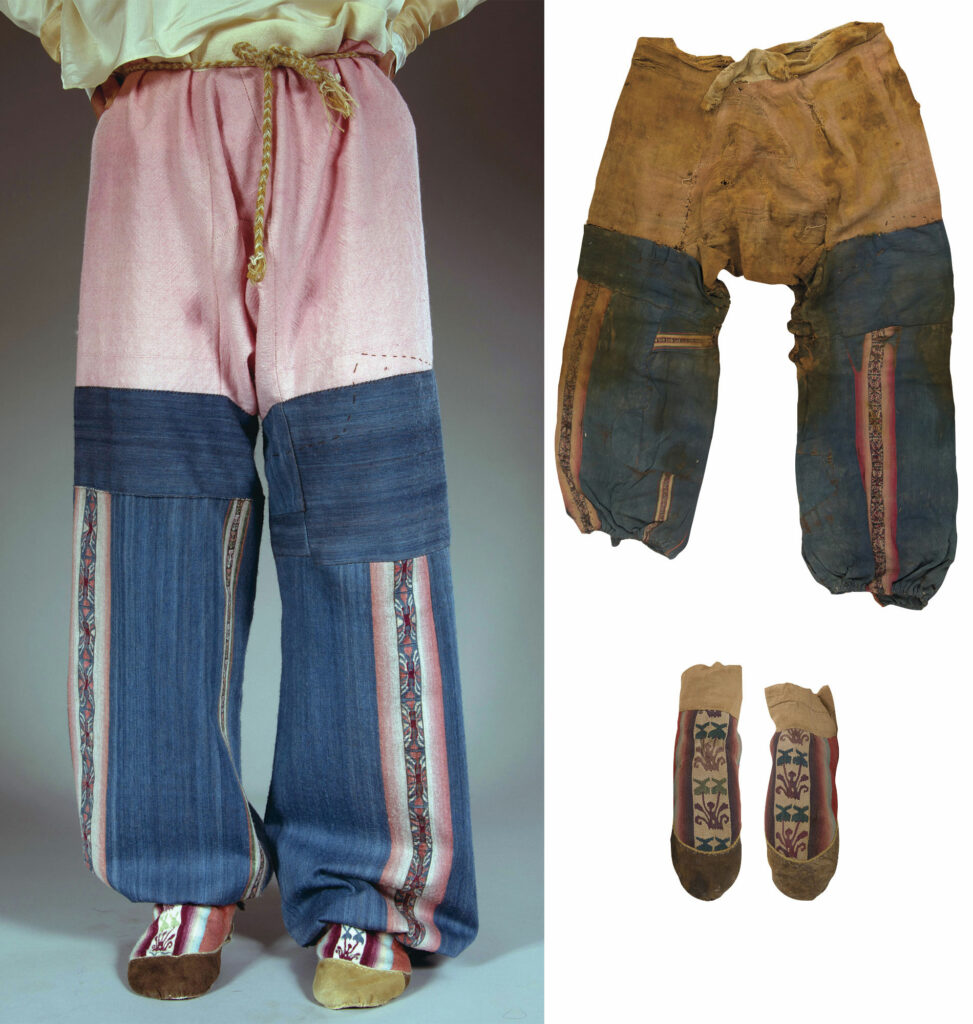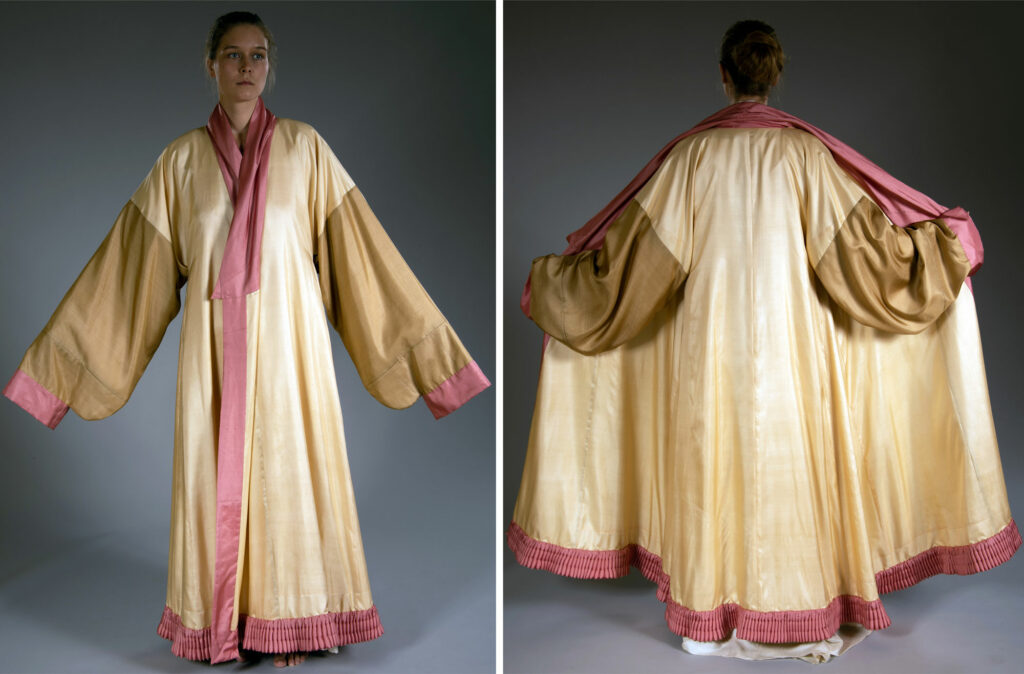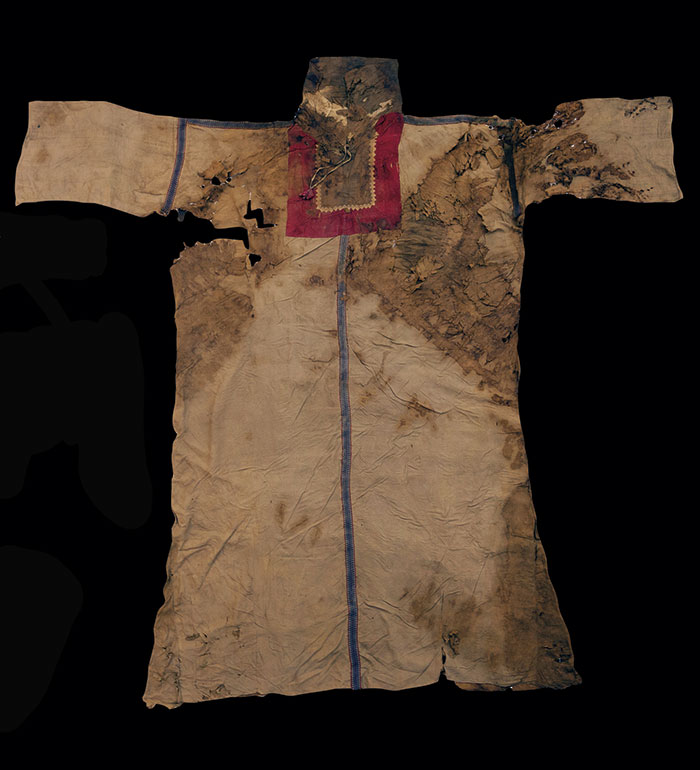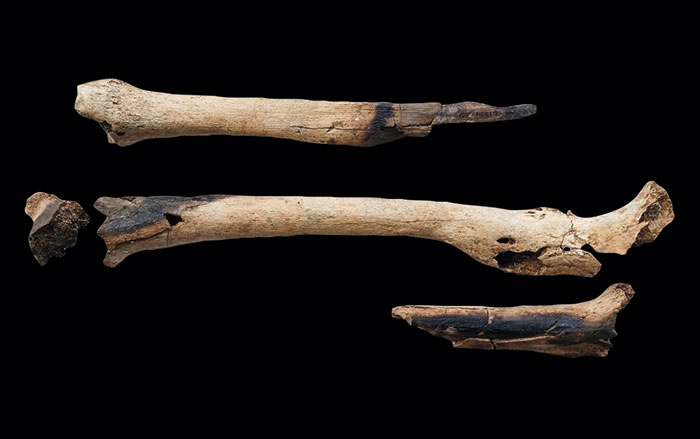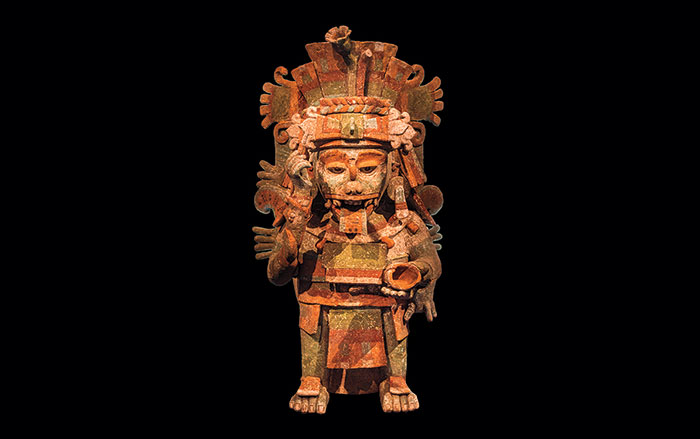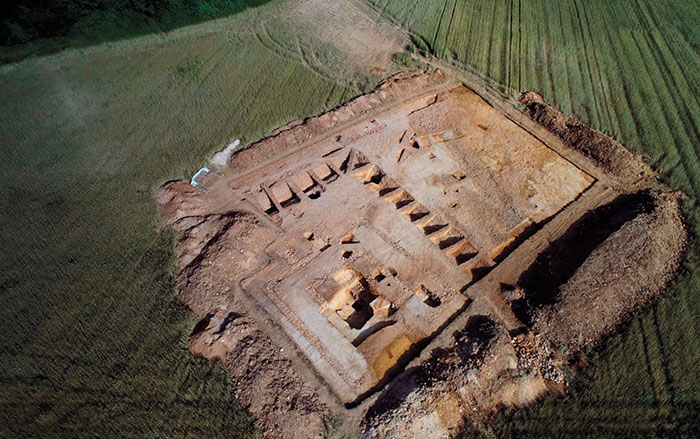A young woman buried in China’s Tarim Basin some 2,000 years ago went to the afterlife accompanied by the height of fashion. The woman, who was wrapped in a felt blanket and buried in a coffin fashioned from a tree trunk, was equipped with three outfits made using starkly contrasting styles that sprang from different sartorial traditions. Recently, a team led by archaeologist Mayke Wagner of the German Archaeological Institute and scholars from the Xinjiang Academy of Cultural Heritage reinvestigated the garments, which were excavated 30 years ago at the site of Niya, an oasis settlement that lay on one of the early Silk Road routes connecting China and western Eurasia. The team radiocarbon dated the pieces to between a.d. 60 and 130 and then made faithful copies. The garments include an ensemble made in the style of the Parthian people of Iran consisting of a silk tunic with a wool collar, wool shoes, and wool trousers. This outfit is accompanied by a silk robe reminiscent of Chinese gowns and a silk blouse and skirt cut in a fashion similar to local woolen styles. “Every piece of her outfit surprised and impressed us,” says Wagner. “Most fascinating for me, perhaps, was the combination of airy silk with earthbound wool.”
Wagner notes that the stylish garments, which would have been considered haute couture at the time, seem out of place in the woman’s humble burial. “Her delicate clothing suggests that she was a prominent social figure,” she says, “but the felt blanket and tree-trunk coffin are commonly associated with burial practices in steppe environments inhabited by shepherds.” Just as her blouse and skirt combined local style with cosmopolitan Chinese fashion, her burial indicates that the young woman was probably adept at moving between very different cultures.
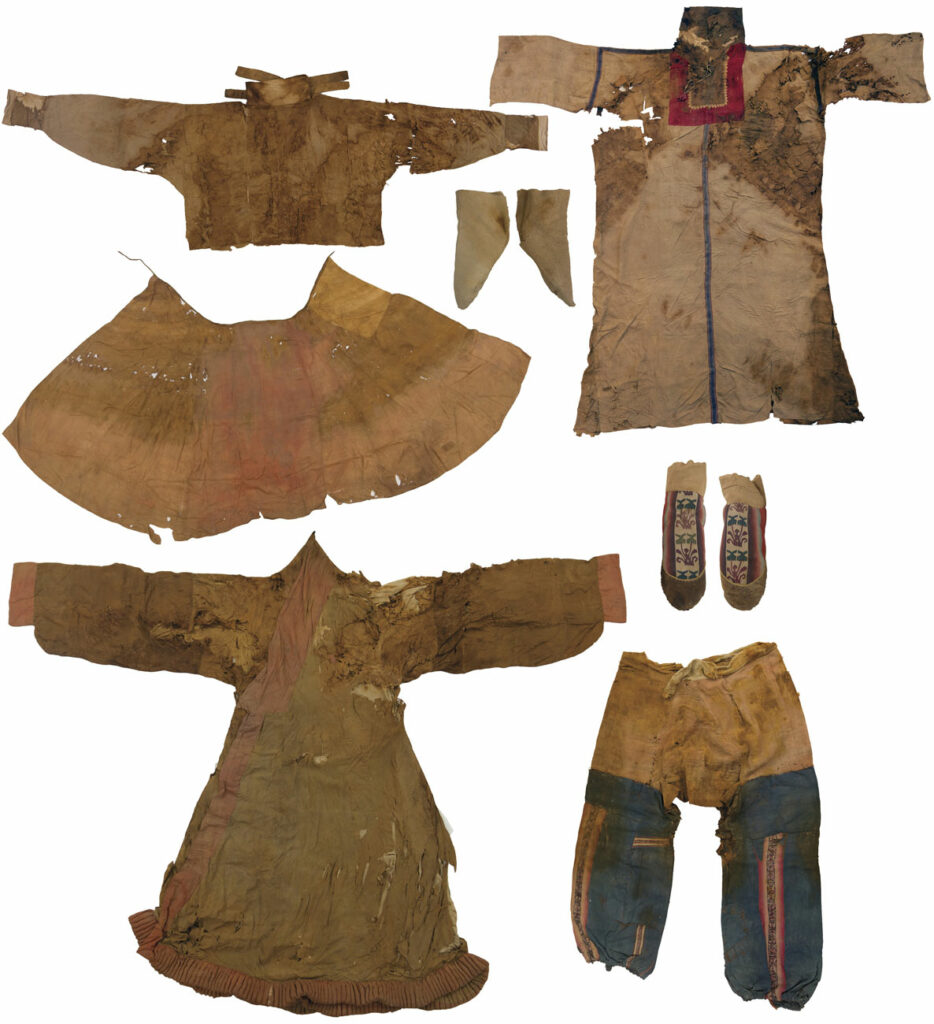
Slideshow: Vintage Threads
Recently, a team led by archaeologist Mayke Wagner of the German Archaeological Institute faithfully reconstructed 2,000-year-old silk and wool garments discovered at the site of Niya in what is now western China. They were placed in the grave of a young woman who scholars believe once wore the clothing. The garments’ elaborate construction suggests she was a person of some consequence in her community. Perhaps these specific outfits signaled her importance, or, perhaps, they were simply her favorite looks.
